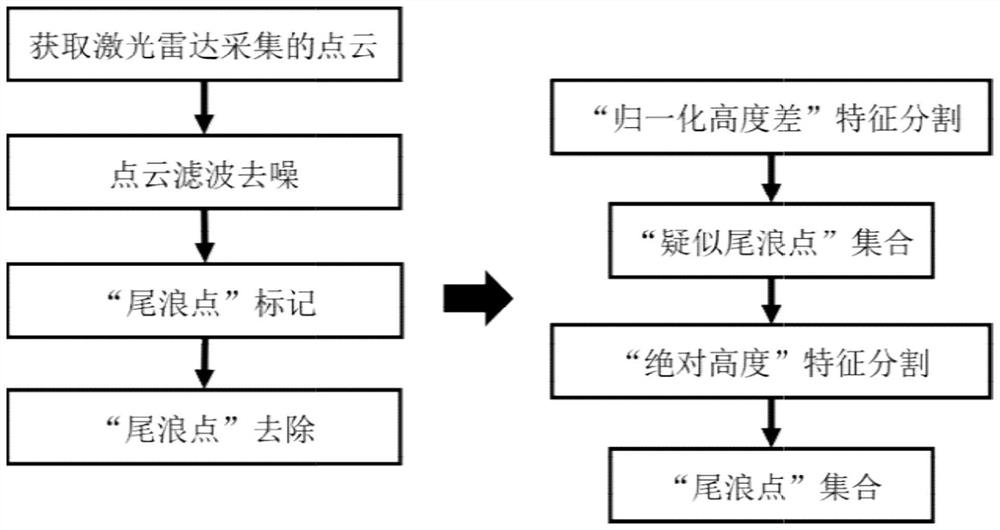Tail wave filtering method applied to unmanned ship
An unmanned boat and filtering technology, applied in the field of unmanned boat water surface environment perception and understanding, can solve the problems of residual wake wave point cloud, high scene adaptability, algorithm failure, etc., to avoid inaccurate classification and stable imaging distance. Robust, good feature robustness
- Summary
- Abstract
- Description
- Claims
- Application Information
AI Technical Summary
Problems solved by technology
Method used
Image
Examples
Embodiment Construction
[0041] In order to make the object, technical solution and advantages of the present invention clearer, the present invention will be further described in detail below in conjunction with the accompanying drawings and embodiments. It should be understood that the specific embodiments described here are only used to explain the present invention, not to limit the present invention. In addition, the technical features involved in the various embodiments of the present invention described below can be combined with each other as long as they do not constitute a conflict with each other.
[0042] Such as figure 1 As shown, the present invention provides a wake wave filtering method for unmanned boat applications, comprising the following steps:
[0043] Step 1: Obtain point cloud data of the water surface environment around the unmanned boat, and the point cloud data is scanned by a multi-line rotating lidar.
[0044] The lidar used in this embodiment is the Pandar40 lidar of Sh...
PUM
 Login to View More
Login to View More Abstract
Description
Claims
Application Information
 Login to View More
Login to View More - R&D
- Intellectual Property
- Life Sciences
- Materials
- Tech Scout
- Unparalleled Data Quality
- Higher Quality Content
- 60% Fewer Hallucinations
Browse by: Latest US Patents, China's latest patents, Technical Efficacy Thesaurus, Application Domain, Technology Topic, Popular Technical Reports.
© 2025 PatSnap. All rights reserved.Legal|Privacy policy|Modern Slavery Act Transparency Statement|Sitemap|About US| Contact US: help@patsnap.com



